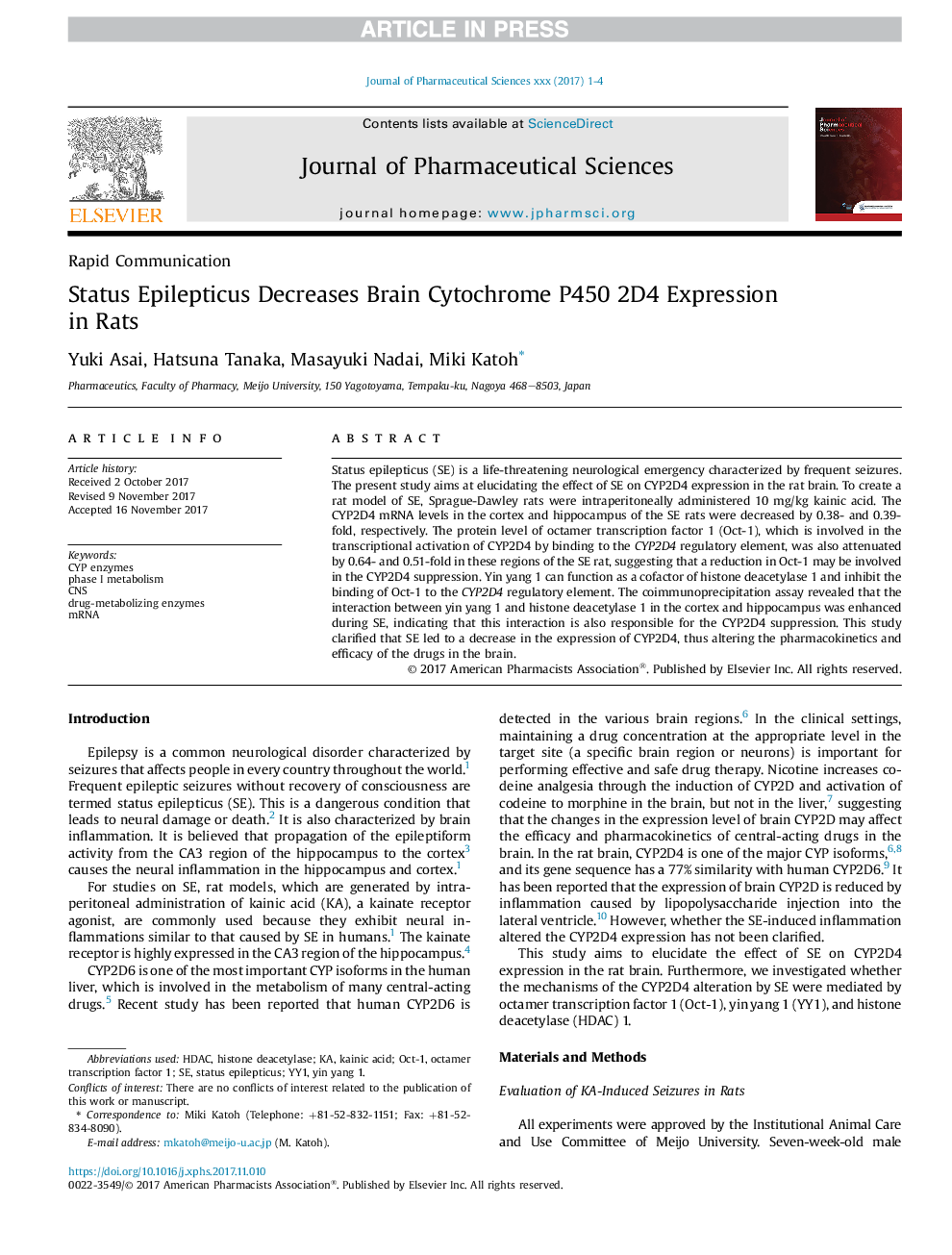| Article ID | Journal | Published Year | Pages | File Type |
|---|---|---|---|---|
| 8513355 | Journal of Pharmaceutical Sciences | 2018 | 4 Pages |
Abstract
Status epilepticus (SE) is a life-threatening neurological emergency characterized by frequent seizures. The present study aims at elucidating the effect of SE on CYP2D4 expression in the rat brain. To create a rat model of SE, Sprague-Dawley rats were intraperitoneally administered 10 mg/kg kainic acid. The CYP2D4 mRNA levels in the cortex and hippocampus of the SE rats were decreased by 0.38- and 0.39-fold, respectively. The protein level of octamer transcription factor 1 (Oct-1), which is involved in the transcriptional activation of CYP2D4 by binding to the CYP2D4 regulatory element, was also attenuated by 0.64- and 0.51-fold in these regions of the SE rat, suggesting that a reduction in Oct-1 may be involved in the CYP2D4 suppression. Yin yang 1 can function as a cofactor of histone deacetylase 1 and inhibit the binding of Oct-1 to the CYP2D4 regulatory element. The coimmunoprecipitation assay revealed that the interaction between yin yang 1 and histone deacetylase 1 in the cortex and hippocampus was enhanced during SE, indicating that this interaction is also responsible for the CYP2D4 suppression. This study clarified that SE led to a decrease in the expression of CYP2D4, thus altering the pharmacokinetics and efficacy of the drugs in the brain.
Keywords
Related Topics
Health Sciences
Pharmacology, Toxicology and Pharmaceutical Science
Drug Discovery
Authors
Yuki Asai, Hatsuna Tanaka, Masayuki Nadai, Miki Katoh,
